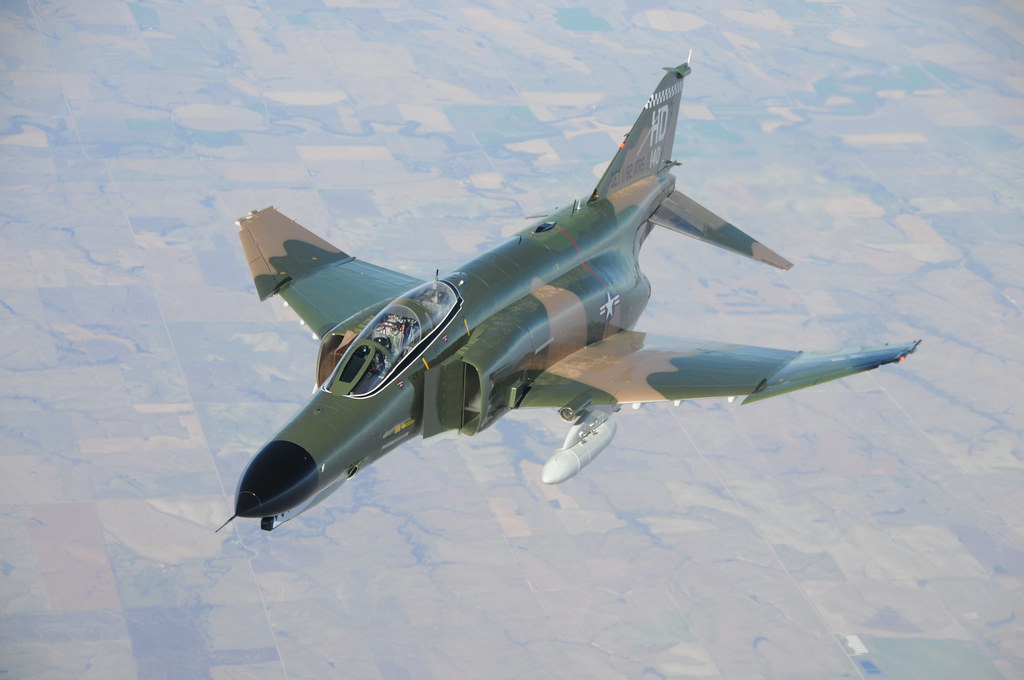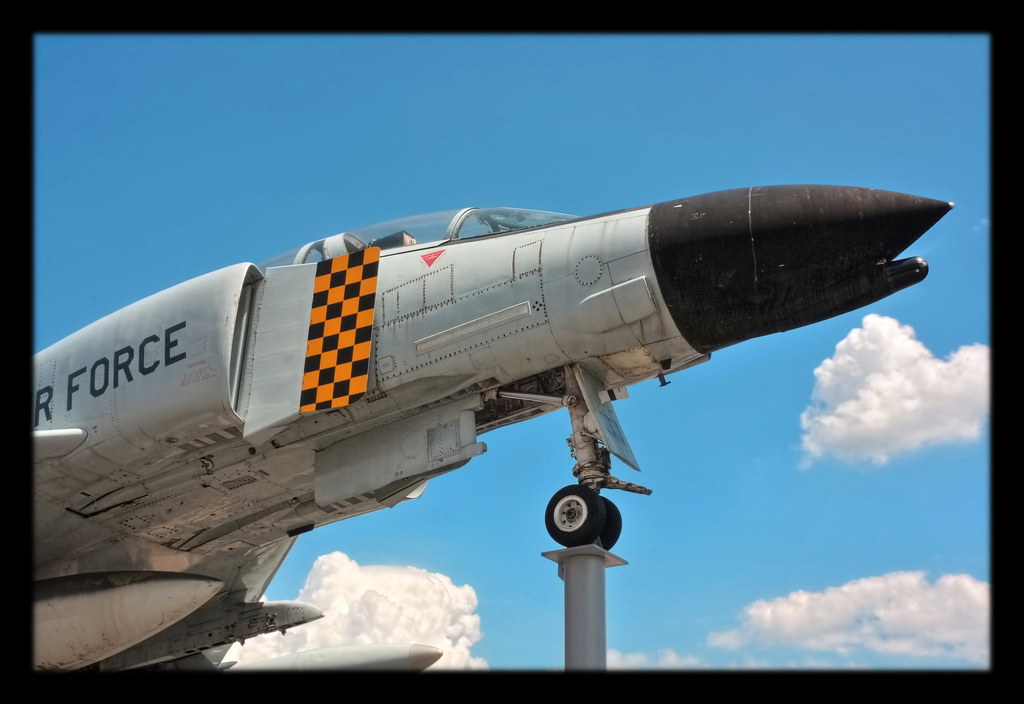
The F-4 Phantom, developed by McDonnell Aircraft, not only excelled as a U.S. Navy attack aircraft and an Air Force fighter bomber but also became an icon of Cold War military power and technological innovation. First taking flight on May 27, 1958, the Phantom entered service in 1961 and quickly became a symbol of American air superiority, setting speed and altitude records and serving valiantly in conflicts such as Vietnam and Operation Desert Storm.

The F-4’s prowess was not accidental. It sprang from a relentless quest for expanded capabilities and performance which McDonnell Aircraft began in 1953, reworking its F3H Demon naval fighter into what would be known as the “Super Demon.” This relentless evolution of design culminated in an all-weather fighter bomber that would dominate the skies.

Equipped with two General Electric J-79-GE-15 engines, the Phantom could reach a maximum speed of 1,400 mph, a cruising speed of 590 mph, and boasted a range of 1,750 miles. Its ability to fly at Mach 2, carrying up to 16,000 pounds of varied ordnance, made it a formidable presence in any conflict. This multirole capability meant that the Phantom was not only the first choice for interception but also excelled in air-to-air combat, close air support, and reconnaissance missions.

As “the most produced American jet fighter in history,” the F-4 set a high bar. McDonnell Douglas produced a staggering 5,195 units from 1958 until 1979. The Phantom’s production statistics are impressive: 2,874 went to the U.S. Air Force, the Navy and Marine Corps received 1,264, and international customers, 919. These numbers stand testament to the F-4’s versatility and endurance, with the aircraft continuing to fly in defense of 8 nations well after its retirement from U.S. military forces in 1996.

The F-4’s service history is as rich as its technological prowess. In Vietnam, the Phantoms were initially armed only with missiles, which led to serious losses to MiG fighters. This prompted the addition of a 20-mm cannon for dogfighting effectiveness, as well as increased payload capabilities for surface attacks. The Phantom’s ability to switch from air superiority roles to ground attacks was not merely a design success but a tactical advantage, one that proved crucial in the Arab-Israeli War of 1973 and the Persian Gulf War.

Perhaps one of the Phantom’s most distinguished roles was as a Wild Weasel aircraft—a type of aircraft designed to identify, target, and suppress enemy air defense systems. These missions were perilous, and F-4 Phantoms specialized in this role were integral in neutralizing threats and protecting strike packages.

The F-4 Phantom’s final flight took place on April 17, 2013, marking the end of an era. The last Phantom, tail number 68-0599, an RF-4C, was regenerated from storage at the 309th Aerospace Maintenance and Regeneration Group (AMARG) in Tucson, Arizona, before taking to the skies one last time. This aircraft, emblematic of the Phantom’s long service life, was converted into a QRF-4C drone to continue serving as a full-scale aerial target.

Beyond combat performance, the F-4 Phantom II was symbolic of the era in which it served. Its adoption by both the Blue Angels and the Thunderbirds showcased its agility and performance, even as it transitioned between different branches of the military.

In retrospect, the F-4 Phantom II stands as a testament to American engineering and military might. Its impressive service record, spanning almost four decades, and its continued use in several nations’ air defenses underscore its unparalleled legacy in aviation history—a legacy that continues to be an object of fascination for military enthusiasts and historians alike.
related images you might be interested.







